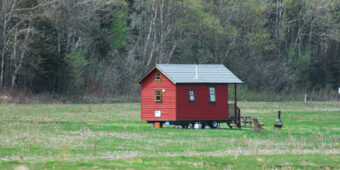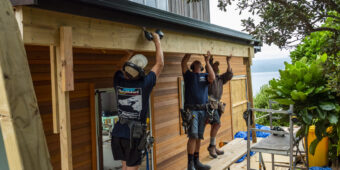New data shows confidence and jobs building
15 Feb 2021, Building and housing, News

Two independent sets of data released in early 2021 bode well for the building and construction industry, with both business confidence and job numbers rising
The New Zealand Institute of Economic Research (NZIER) business opinion survey, released in mid-January, shows that increased construction demand is driving improved business sentiment, while Stats NZ data released in early February shows growth in the construction industry is offsetting job losses in other sectors.
NZIER Quarterly Survey of Business Opinion
The latest NZIER Quarterly Survey of Business Opinion (QSBO) shows an improvement in business confidence in the final quarter of 2020, as businesses held onto the recovery in sales seen in September.
The New Zealand Institute of Economic Research has conducted its Quarterly Survey of Business Opinion since 1961. It is New Zealand’s longest-running business opinion survey. Each quarter around 4,300 firms are asked whether they believe business conditions will deteriorate, stay the same, or improve.
According to Christina Leung, Principal Economist at NZIER, opinion is more relevant than some might realise.
“Our research shows that business confidence is strongly linked to subsequent spending and the flow on effects the economy and employment.”
For the final quarter of 2020, a net 16 percent of businesses said they expected a deterioration in general economic conditions over the coming months, on a seasonally adjusted basis. This is significantly lower than the 38 percent in the previous quarter (September 2020), and well below the 68 percent of businesses feeling pessimistic in March 2020.
Strong construction demand boosts sentiment
The building sector remains the most optimistic of all the sectors surveyed, as strong construction demand supports a lift in confidence. With the pipeline of residential, non-residential and Government construction work increasing, building sector firms are hiring to keep up with demand. The rebound in construction activity is driving capacity utilisation in the sector to record highs.
Christina Leung said the sentiment in the building sector had flipped over the course of 2020.
“The building and construction sector has gone from the most pessimistic sector in the economy in the first half of 2020, to the most optimistic in the second half of 2020. This shows just how strong the recovery has been in this sector, and the demand for staff is now being felt as a result.”
Although sentiment in the other sectors has improved, businesses are generally still cautious about general economic conditions ahead. Demand has improved in most of the other sectors, but firms are still finding it difficult to pass on rising costs by raising prices. This is weighing on firm profitability.
Firms looking to hire and invest
Despite weak profitability, increased certainty about the outlook is encouraging businesses to hire and invest. A net 15 percent of firms are planning to increase headcount in the next quarter, while a net 10 percent of firms are looking to invest in plant and machinery. These results indicate a recovery in employment and business investment over 2021.
As employment demand improves, labour shortages are becoming more acute. This is particularly the case for skilled labour, with a net 43 percent reporting difficulty in finding skilled labour – close to levels seen in early 2020.
Confidence translates to jobs
An increased number of jobs in the construction industry overcame Covid-19-induced losses in other sectors like media and tourism over 2020, data from Stats NZ shows.
Data from two surveys produced by Stats NZ show a substantial increase in the number of people employed in construction.
The household labour force survey (HLFS) captures information from householders, showing the employee’s perspective on what industry householders are employed in. The HLFS showed an annual increase of 21,000 people whose main job was in the construction industry, up to 278,300 people in the December 2020 quarter. Of this increase, 15,200 were men and 5,800 were women.
“Although overall employment is similar to a year ago, looking at employment changes by industry shows how New Zealand jobs have changed in response to COVID-19 and its restrictions,” labour market manager Andrew Neal said.
“The strong growth in the construction industry across 2020 reflected an increase of 13,200 people employed in construction services,” Mr Neal said. “This includes people working in areas such as plumbing and electrical services, roofing, and concreting.”
The quarterly employment survey (QES) measures the number of jobs filled from a business’s perspective. While this survey produced slightly different results, the results were in line with the HLFS survey.
The QES showed the number of jobs in construction rose by 17,600 over the year, largely from residential building construction and building structure services.
While the construction industry saw strong increases in the year to the December 2020 quarter, this was partially offset by fewer people employed in media and key tourism related businesses.
“The increase in construction was the main driver in the national increase of 18,400 filled jobs.” Andrew Neal said.
Register to earn LBP Points Sign in



